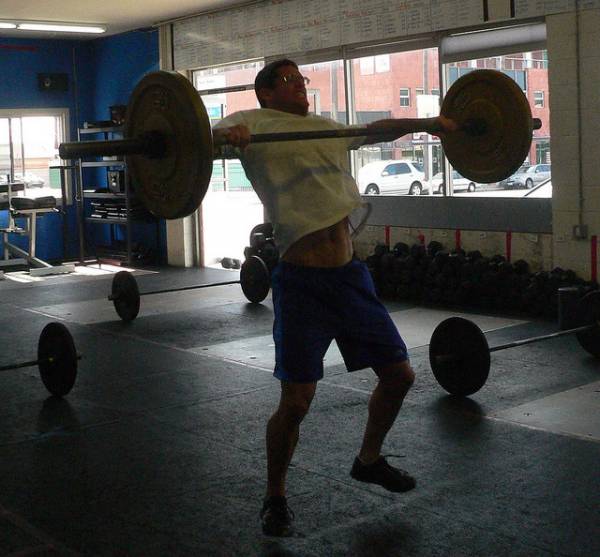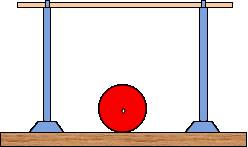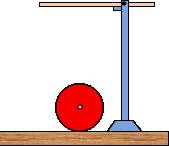Last week we talked about the correlation between your quick lifts and your strength lifts. In this week’s piece I will continue the discussion centering on Anatoli Chernyak’s 1978 book Methods Of Planning Training For Weightlifters. Here I will concentrate on the height that you lift your snatches and cleans. This is mainly directed to competitive weightlifters but it can be applied to anyone whose power snatch or power clean is an important part of their training. I will start with the lifters first.
The height that the bar is lifted in performing the Olympic lifts displays two aspects of your training preparation: on the one hand, it reflects the level of speed and strength development, and on the other hand, it shows your level of technical perfection. The real height of lifting the bar depends upon several variables, most notably your grip width, your flexibility and mobility, your body proportions, your level of development (i.e., novice to elite), and of course the weight on the bar.
The height or a pull is not measured by conventional inches or centimeters. Instead, the relative height of the athlete is what is used. Just divide the pull height of your best full squat snatch or clean by your full height, multiply by 100, and you get a percentage. (More detailed instructions on how to do this are below.)
The lower your percentage is, the better your technique will be and the more weight you can lift. So the name of the game is to get that relative pulling height down to a minimum. This derived relative height of lifting the bar is a reliable and informative index that characterizes changes in the athlete’s technique.
What Does Relative Pull Height Mean?
Your relative height of lifting the bar decreases over time with the growth of your sporting skill. Therefore, the index characterizes not only the speed and strength abilities of an athlete, but also your technical preparation. If a bar of maximum weight is fixed at a lower height, it is proof of greater skill in the movement. Of course, the height of fixing the bar cannot be decreased indefinitely. It will eventually bottom out when you hit your full potential. You can only be so flexible or so fast.
 If Lifter A lifts the bar to a greater height than Lifter B (all other things being equal), is this good or bad? Well, it frankly means two contradictory things. Firstly, a greater height indicates that A’s speed and strength are better. If you look at it from that angle, it is good. Lifter A is moving the bar higher and faster than Lifter B. But, from a movement technique angle, it is bad. A is lifting the bar higher than necessary. As a consequence it is evident that A will have some reserve for improvement if the pull is shortened. As for Lifter B, he should build his strength, while keeping technique constant.
If Lifter A lifts the bar to a greater height than Lifter B (all other things being equal), is this good or bad? Well, it frankly means two contradictory things. Firstly, a greater height indicates that A’s speed and strength are better. If you look at it from that angle, it is good. Lifter A is moving the bar higher and faster than Lifter B. But, from a movement technique angle, it is bad. A is lifting the bar higher than necessary. As a consequence it is evident that A will have some reserve for improvement if the pull is shortened. As for Lifter B, he should build his strength, while keeping technique constant.
A Closer Look at the Elements of Pull Height
The height of lifting the bar characterizes the ability to fully utilize explosive strength and do the movement precisely. The higher you lift a bar, the more force you must give its impetus. And the greater that impetus force, the faster your bar will move, and the higher it will go. It is important to remember that different athletes have these technical components developed unequally. Some are flexible but cannot move as fast as desired. Others may have the opposite situation.
Grip Width: This is more relevant in the snatch since grip choice is wider there. A wide grip allows a higher and faster pull, but at the cost of grip strength and perhaps too much shoulder mobility and other subtle effects.
Bar Weight and Speed: As you approach your personal record, the bar speed will slow down. It has to. If it moves faster, then the weight is not your best, really. And if it slows down, you will not complete the lift. So there is an optimum speed for limit lifts as well as an optimum height for their fixation.
Flexibility: If Lifter A is more flexible than Lifter B, he or she should be able to hit a lower squat position. As a result A should be able to pull to a lower height. The same with shoulder joint mobility. If your shoulders are tight you will likely not be able to hold a snatch very well in the rock bottom position. You will have to be content with holding the bar at a higher position. And that means a higher required pull. And that means less potential weight will be on your bar.
Body Proportions: A lifter’s arm and leg length will affect pulling height. Ectomorphic lifters will have longer arms, necessitating a lower hang position and higher pull height, but their longer legs may allow a deeper squat. The final effect depends on their proportions, arm to leg.
Skill Level: With the growth of sporting qualification, criteria of technical preparation will improve. You will learn how to pull the minimum required distance.
How to Measure Your Pulling Height
 Set up two moveable squat stands on one side of the barbell, one sitting a foot or so in front of the bar, the other the same distance behind it. Set the racks’ heights to something close to where your pulling height is. Then place a broomstick between their racks and start your workout. The name of the game here is to snatch or clean the weight without the barbell end displacing the broomstick. It may take some trial and error to determine your minimum pulling height.
Set up two moveable squat stands on one side of the barbell, one sitting a foot or so in front of the bar, the other the same distance behind it. Set the racks’ heights to something close to where your pulling height is. Then place a broomstick between their racks and start your workout. The name of the game here is to snatch or clean the weight without the barbell end displacing the broomstick. It may take some trial and error to determine your minimum pulling height.
 Barring racks, a hinged height gauge can be rigged up with a little ingenuity so that the stick does not fly off the racks on the first rep. See my attempt at drawing these devices, sitting on a platform with a barbell placed at 90 degrees to them on one end.
Barring racks, a hinged height gauge can be rigged up with a little ingenuity so that the stick does not fly off the racks on the first rep. See my attempt at drawing these devices, sitting on a platform with a barbell placed at 90 degrees to them on one end.
Once the height is established, you can set up the gauge when doing your full snatches or cleans. If you find yourself hitting the stick too often, your squat technique is getting rough. On the other hand, with good technique work you may find that your gauge height has to be lowered.
Only Training Power Lifts?
Now, finally, how does all this apply to those of you who only use the power versions in your training? Well, you simply reverse the goal, that’s how. Instead of learning to shorten the pull, you attempt to maintain it at a desire height. You try to hit the broomstick on each power lift. If it doesn’t you aren’t pulling high enough. As an aside, the devices can also be used on pulls, either way.
So, if you are an Olympic lifter you want to lower those squat stands over time. If you are an athlete who only needs to do the power snatch or power clean, then you want to raise the racks over time. Pull height is important to both. Use this method to keep your speed-strength properly correlated to your absolute strength.
References:
1. Chernyak, A. V., Methods of Planning the Training of Weightlifters, Moscow, FiS, 1976.
Photos provided by CrossFit LA.






